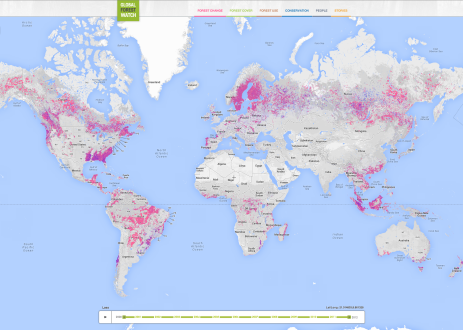Prioritization Method for Tree Cover Change Alert (GLAD Alert) for Various Cases in Indonesia
Synopsis
This technical note is drawn up to explain the prioritization approach and methodology of GLAD Alert in three monitoring activities: (1) illegal logging monitoring, (2) landscape monitoring and (3) peatland clearing monitoring.
Executive Summary
Data from Global Forest Watch indicates a decrease in annual primary forest cover loss in Indonesia since 2016. However, the threat of illegal forest loss continues to loom over various regions, making it necessary to develop more effective forest monitoring methods. At initial stage, forest clearing is often difficult to detect, as it is generally carried out on a relatively small scale. Detection is easier for clearing at larger scale, but by that point, the extent of forest loss is already much larger, making it more challenging to address. This situation underscores the importance of having data and information available to detect early-stage forest clearing to prevent more extensive forest cover loss as early as possible.
Weekly tree cover change alert (GLAD Alert) data from the University of Maryland facilitates rapid and periodic detection of forest loss. GLAD Alert, generated every eight to fourteen days, allows users to monitor forest cover changes periodically. WRI Indonesia utilizes GLAD Alert data and combines it with contextual data, such as land status and land use, to enhance the forest monitoring and protection effectiveness in Indonesia.
This technical note is drawn up to explain the prioritization approach and methodology of GLAD Alert in three monitoring activities: (1) illegal logging monitoring, (2) landscape monitoring and (3) peatland clearing monitoring. This document is hoped to provide insights into forest monitoring methods used in various ecosystems that can be replicated by local governments, forest management units (KPH), civil society organizations, forest guards and other stakeholders in forest protection initiatives.
Projects

Global Forest Watch
Launch PlatformLaunch Platform Visit ProjectA dynamic online forest monitoring and alert system that empowers people everywhere to better manage forests.
Part of Forests & Land Use
